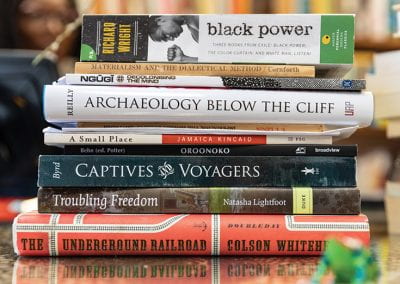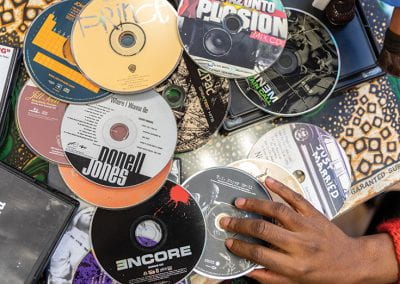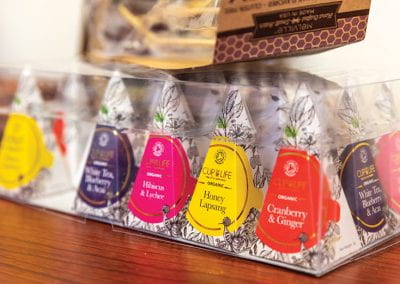Office Hours: An Honors Professor Reflects on Her Office
By Caree Banton
Photos by Chieko Hara
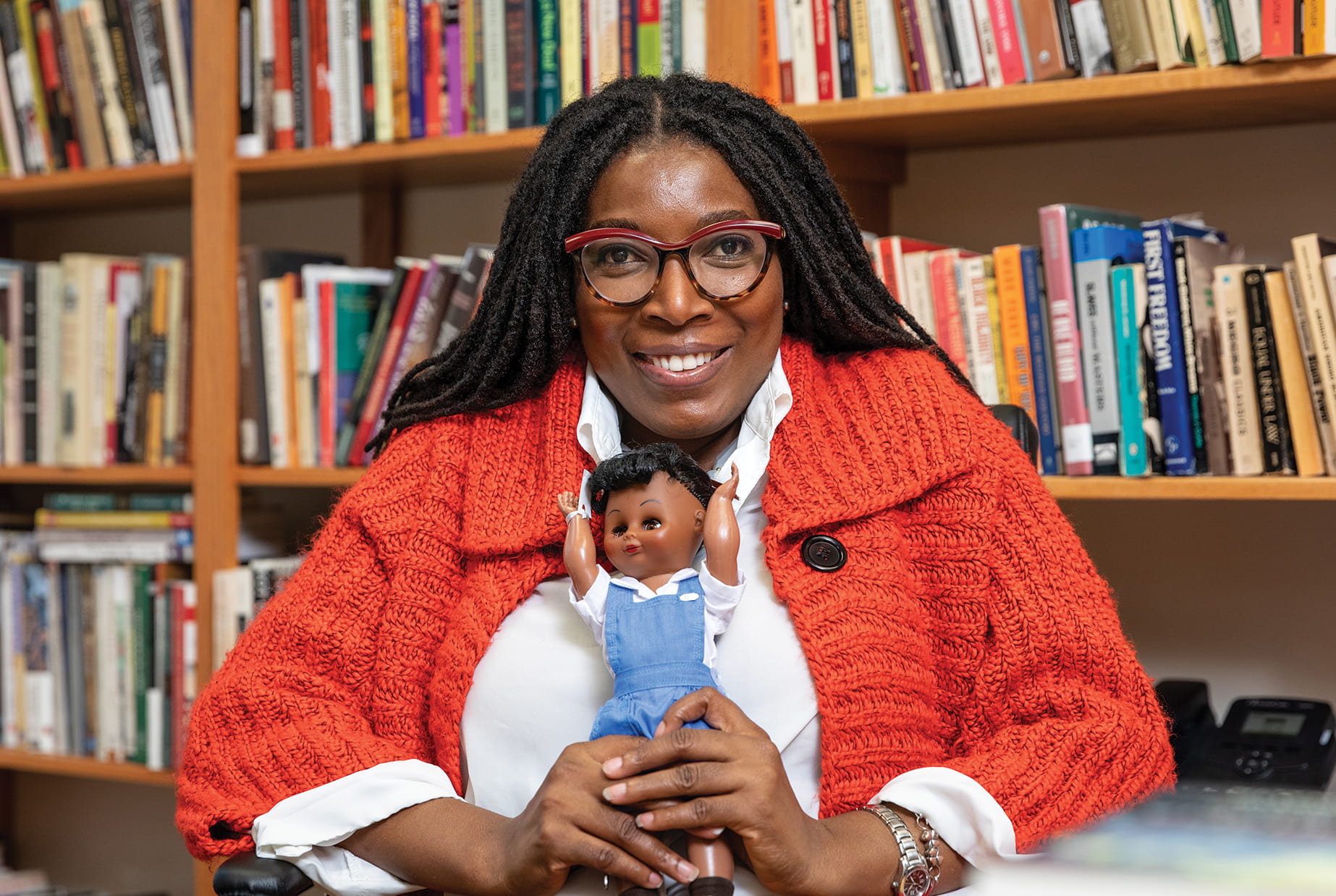
Caree Banton is director of the African and African American Studies program.
“These objects and sounds help in the standing and in the work of penetrating the walls with sounds that would never be welcomed in a formal curriculum.”

An influential Jamaican film, one of many DVDs students may borrow.
Students tend to jokingly refer to encounters with African and African American Studies with the popular Jay-Z lyrics “all Black everything.” In a historically white institution where the atmosphere, and especially the constituted normative curriculum, were created with little input from those who were once excluded, that soundtrack necessarily becomes louder in my office. My office in Memorial Hall has big windows, a balcony overlooking Maple Street, floor-to-ceiling bookshelves, and a large wooden, glass-top desk adorned in African cloth. The office itself is filled with objects ranging from African masks and unity bowls to adinkra symbols stamped on kente cloth, repping the personal brands of students from previous study abroad programs to Ghana. Objects like the Sankofa bird, a figurative reminder of the African philosophy of going to retrieve one’s past to go forward, is displayed prominently as a reminder of the significance of Black history. The shelves as if in agreement display canonical texts such as V. Y. Mudimbe’s The Invention of Africa, Richard Wright’s Black Power, John Hope Franklin’s From Slavery to Freedom, Eric Williams’ Capitalism and Slavery and C.L.R James’ Black Jacobins.

Hand-crafted Ghanaian mask, one of several African masks on display.
I can imagine that one might find the doll I keep on my office desk a bit strange. I keep this Black baby doll because it was given to me by Evol Beckford, my high school tennis coach and mentor, who at the time was the vice principal at our former high school in Jamaica, the Hampton School for Girls. Yet, the doll is also a reminder of the series of 1940s experiments conducted by the psychologists Kenneth and Mamie Clark to test racial perceptions. When the Clarks asked children between the ages of three to seven to identify both the race of the dolls and the color doll they preferred, they largely chose the white doll and assigned it positive characteristics. Thus, what I hope this Black baby doll represents for young university students in a space where they might not see many others who look like them, is a reflection of an inner child that is beautiful and valued. Similarly, I also display a framed cloth portrait of a beautiful African woman that I acquired in Benin to serve as a countervailing force against the kinds of misogynoir (word to Moya Bailey) and the other forms of unique discrimination that Black women face on a regular basis. It simply lets Black women know that they deserve dignity regardless of whether they are deemed respectable by onlookers.
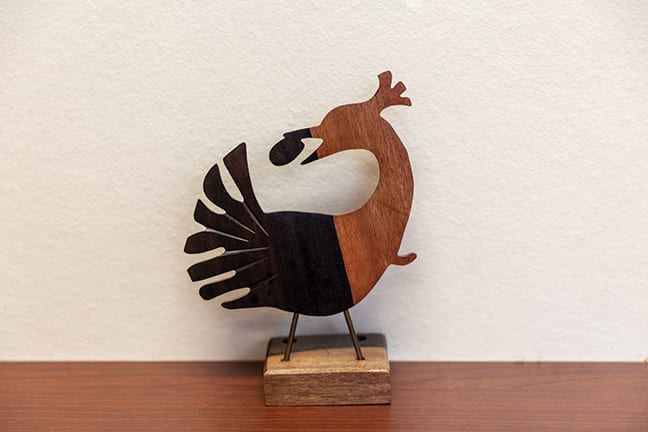
The Sankofa bird represents the importance of looking to the past to move forward.
Bob Marley is perhaps the most popular Jamaican and Rastafarian but even he was largely viewed as a pariah and condemned by educated, establishment Jamaicans. The imagery of him hanging in my office represents so much of my own hair transition as well as the loose cultural, religious and intellectual tradition that I came of age in growing up in Jamaica. Rastafari’s idea of reasoning, a practice of deep intellectual inquiry and debate, cultivated my curiosity about everyday people and ideas that I often did not learn in school. The Bob Marley image reminds me to keep those ideas close. Besides Marley’s imagery, I keep CDS of reggae, rap, Afro-beats, and other music from Black traditions in my office. Thus, a student upon walking into my office might hear Jay Z, Prince, Tha Hot Boyz, some Azonto or Burnaboy music. Films that represent the Black experience such as Sankofa, The Harder They Come, and Life and Debt are ready at hand for those new to the study of the experiences of Black people.
There is a Maya Angelou quote that says, “I come as one, but I stand as 10,000” that is essentially an African American interpretation of Ubuntu, “I am they and they are me.” These objects and sounds help in the standing and in the work of penetrating the walls with sounds that would never be welcomed in a formal curriculum.
Caree Banton is teaching an Honors College Signature Seminar on Black Utopias this fall.
Kente cloth from Adahomase with adinkra symbols printed by study abroad students.



